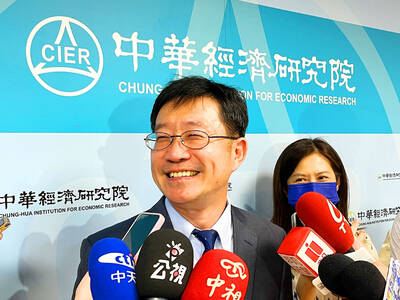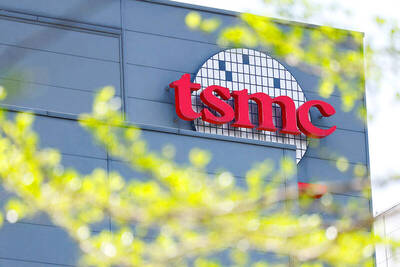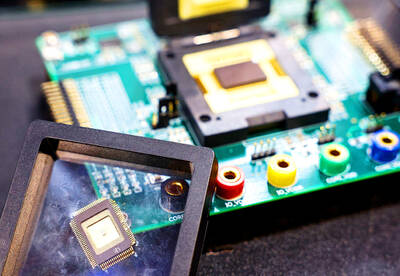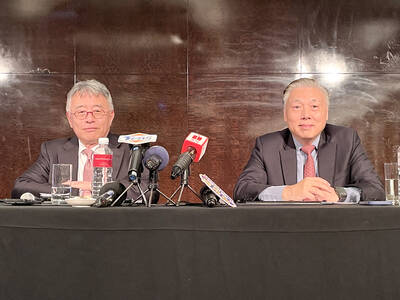The British economy has officially sunk into recession, with government figures yesterday showing the economy shrank 1.5 percent in the fourth quarter of last year as the financial crisis ravaged banks, retail and manufacturing.
It was the biggest decline since the early days of former British prime minister Margaret Thatcher’s government nearly 30 years ago.
Following the 0.6 percent decline recorded in the third quarter, Britain is now officially in recession — the standard definition of a recession is two quarters of negative growth.
The quarter-to-quarter drop in the fourth quarter came with both services and manufacturing output sharply down in the wake of the banking crisis, the seizing up of lending and already-confirmed recessions around the world, from the US to Germany and Japan.
The fourth quarter drop was larger than the 1.2 percent predicted by most economists and means that the British economy contracted by more than at any time since the 1.8 percent fall recorded in the second quarter of 1980 when the then new Thatcher government reined in spending to reduce the budget deficit and hiked interest rates to rein in double-digit inflation.
The output figure released by the Office for National Statistics was 1.8 percent lower in the fourth quarter from the same period the year before.
The annual decline was the biggest since the second quarter of 1991, when output was 2.2 percent lower during Britain’s last mired in recession.
For last year as a whole, GDP rose by 0.7 percent, down from the 3 percent growth in 2007, and the lowest level of growth since 1992’s 0.1 percent.
The average postwar recession in Britain has lasted for around 15 months, which would, if replicated during this current downturn, mean that the country will continue contracting until the autumn of this year. However, most economists think that this recession will last longer, and possibly last well into next year.

WEAKER ACTIVITY: The sharpest deterioration was seen in the electronics and optical components sector, with the production index falling 13.2 points to 44.5 Taiwan’s manufacturing sector last month contracted for a second consecutive month, with the purchasing managers’ index (PMI) slipping to 48, reflecting ongoing caution over trade uncertainties, the Chung-Hua Institution for Economic Research (CIER, 中華經濟研究院) said yesterday. The decline reflects growing caution among companies amid uncertainty surrounding US tariffs, semiconductor duties and automotive import levies, and it is also likely linked to fading front-loading activity, CIER president Lien Hsien-ming (連賢明) said. “Some clients have started shifting orders to Southeast Asian countries where tariff regimes are already clear,” Lien told a news conference. Firms across the supply chain are also lowering stock levels to mitigate

Six Taiwanese companies, including contract chipmaker Taiwan Semiconductor Manufacturing Co (TSMC, 台積電), made the 2025 Fortune Global 500 list of the world’s largest firms by revenue. In a report published by New York-based Fortune magazine on Tuesday, Hon Hai Precision Industry Co (鴻海精密), also known as Foxconn Technology Group (富士康科技集團), ranked highest among Taiwanese firms, placing 28th with revenue of US$213.69 billion. Up 60 spots from last year, TSMC rose to No. 126 with US$90.16 billion in revenue, followed by Quanta Computer Inc (廣達) at 348th, Pegatron Corp (和碩) at 461st, CPC Corp, Taiwan (台灣中油) at 494th and Wistron Corp (緯創) at

NEGOTIATIONS: Semiconductors play an outsized role in Taiwan’s industrial and economic development and are a major driver of the Taiwan-US trade imbalance With US President Donald Trump threatening to impose tariffs on semiconductors, Taiwan is expected to face a significant challenge, as information and communications technology (ICT) products account for more than 70 percent of its exports to the US, Chung-Hua Institution for Economic Research (CIER, 中華經濟研究院) president Lien Hsien-ming (連賢明) said on Friday. Compared with other countries, semiconductors play a disproportionately large role in Taiwan’s industrial and economic development, Lien said. As the sixth-largest contributor to the US trade deficit, Taiwan recorded a US$73.9 billion trade surplus with the US last year — up from US$47.8 billion in 2023 — driven by strong

ASE Technology Holding Co (ASE, 日月光投控), the world’s biggest chip assembly and testing service provider, yesterday said it would boost equipment capital expenditure by up to 16 percent for this year to cope with strong customer demand for artificial intelligence (AI) applications. Aside from AI, a growing demand for semiconductors used in the automotive and industrial sectors is to drive ASE’s capacity next year, the Kaohsiung-based company said. “We do see the disparity between AI and other general sectors, and that pretty much aligns the scenario in the first half of this year,” ASE chief operating officer Tien Wu (吳田玉) told an